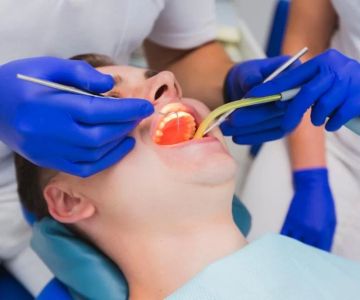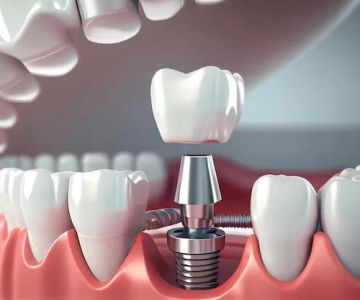Common Oral Problems and How to Address Them: A Complete Guide to Oral Health
- Understanding Common Oral Problems
- Causes of Common Dental Issues
- Prevention and Care for Oral Health
- When to See a Dentist for Oral Problems
- Oral Health Tips and Best Practices
1. Understanding Common Oral Problems
Oral health is essential to overall well-being, yet many people experience common oral problems that affect their daily lives. These issues, such as cavities, gum disease, and tooth sensitivity, are not only uncomfortable but can lead to serious health problems if left untreated. Addressing oral problems early on can prevent more complicated issues down the road.
In this guide, we’ll explore the most common oral problems, their causes, symptoms, and effective ways to prevent and treat them. Understanding these issues is the first step toward taking better care of your oral health.
2. Causes of Common Dental Issues
To prevent oral problems, it’s important to understand what causes them. Here are some of the primary factors contributing to common dental issues:
2.1 Poor Oral Hygiene
One of the leading causes of oral problems is poor oral hygiene. Not brushing and flossing regularly can lead to the buildup of plaque and bacteria in the mouth. This can cause cavities, gum disease, and bad breath. If plaque is not removed, it hardens into tartar, which can only be cleaned by a dentist.
2.2 Diet and Nutrition
What you eat plays a crucial role in your oral health. A diet high in sugary foods and drinks can lead to tooth decay and cavities. On the other hand, foods rich in calcium, such as dairy products, can help strengthen your teeth and prevent damage. A balanced diet supports overall oral health and reduces the risk of problems like gum disease and enamel erosion.
2.3 Smoking and Tobacco Use
Smoking and using tobacco products are major contributors to common oral health problems. Tobacco can cause gum disease, tooth discoloration, and even oral cancer. Quitting smoking and avoiding tobacco products can greatly improve your oral health and reduce the risk of serious dental issues.
2.4 Genetics and Health Conditions
Genetics can also play a role in your oral health. Some people are more prone to cavities, gum disease, and other dental issues due to inherited factors. Additionally, certain health conditions, such as diabetes, can increase the risk of oral problems. People with diabetes, for example, are more likely to develop gum disease and dry mouth.
3. Prevention and Care for Oral Health
The best way to tackle common oral problems is to prevent them. Proper oral care can go a long way in maintaining healthy teeth and gums. Here are some important steps to take for prevention:
3.1 Brush and Floss Regularly
Brushing your teeth at least twice a day with fluoride toothpaste and flossing daily are essential for preventing cavities and gum disease. Regular brushing removes food particles and plaque, while flossing ensures that areas between teeth are clean. Make sure to use a soft-bristled toothbrush and replace it every 3–4 months.
3.2 Visit the Dentist Regularly
Regular dental checkups and cleanings are crucial for catching problems early on. Dentists can identify issues like cavities, gum disease, or oral cancer before they become more severe. The American Dental Association (ADA) recommends visiting the dentist every six months for a professional cleaning and checkup.
3.3 Use Mouthwash
Incorporating mouthwash into your daily routine can help kill bacteria in the mouth and promote better oral hygiene. Choose an antimicrobial mouthwash that targets bad breath, plaque, and gum disease. It can also provide an added layer of protection for your teeth and gums.
3.4 Stay Hydrated
Drinking plenty of water is essential for maintaining good oral health. Water helps rinse away food particles, neutralizes acids in the mouth, and keeps your mouth moist. It also stimulates saliva production, which is your body’s natural defense against tooth decay.
4. When to See a Dentist for Oral Problems
While many oral issues can be managed at home, it’s important to recognize when professional help is needed. Here are some signs that indicate it’s time to visit the dentist:
4.1 Persistent Pain or Sensitivity
If you experience persistent tooth pain or heightened sensitivity to hot and cold foods, it could indicate an underlying issue such as a cavity, cracked tooth, or gum disease. Ignoring the pain can lead to more serious problems.
4.2 Bleeding Gums
Bleeding gums, especially when brushing or flossing, is a common sign of gum disease. If left untreated, gum disease can lead to tooth loss and other serious complications. Early intervention can prevent the condition from worsening.
4.3 Swelling or Abscesses
Swelling in the gums or face, especially around a tooth, could indicate an infection or abscess. This condition often requires immediate treatment to prevent the infection from spreading.
4.4 Bad Breath
Chronic bad breath (halitosis) can be a sign of an oral health issue, such as gum disease, cavities, or a dry mouth. If bad breath persists despite good oral hygiene, it’s a good idea to consult with a dentist.
5. Oral Health Tips and Best Practices
Maintaining good oral health doesn’t have to be complicated. Here are a few easy tips to help keep your teeth and gums healthy:
5.1 Eat a Balanced Diet
Choose foods that are high in nutrients and low in sugar to support your oral health. Foods like leafy greens, cheese, and yogurt are excellent choices for strengthening teeth and gums.
5.2 Use a Good Toothbrush and Toothpaste
Investing in a quality toothbrush and toothpaste can make a big difference in your oral care routine. Look for a toothbrush with soft bristles and a toothpaste that contains fluoride to help protect against cavities.
5.3 Don’t Ignore Dry Mouth
If you suffer from dry mouth, it’s essential to find ways to stimulate saliva production. Chewing sugar-free gum, drinking water frequently, and using mouth rinses can help alleviate dry mouth and protect your teeth.
By taking the right steps and staying proactive about oral hygiene, you can reduce the risk of common oral problems and maintain a healthy smile for years to come. For more tips on how to address and prevent dental issues, visit Dentistry Toothtruth.







 James S Minutello, DDS and Regina D Minutello DMD MS Inc4.0 (255 review)
James S Minutello, DDS and Regina D Minutello DMD MS Inc4.0 (255 review) South Jersey Dental0.0 (0 review)
South Jersey Dental0.0 (0 review) Axiom Dentistry4.0 (314 review)
Axiom Dentistry4.0 (314 review) Valley Pediatric Dentists4.0 (137 review)
Valley Pediatric Dentists4.0 (137 review) Comfort Dental West Mesa - Your Trusted Dentist in Mesa4.0 (696 review)
Comfort Dental West Mesa - Your Trusted Dentist in Mesa4.0 (696 review) King's Family Dental Group4.0 (147 review)
King's Family Dental Group4.0 (147 review) The Importance of Oral Health Education During Pregnancy for a Healthy Pregnancy
The Importance of Oral Health Education During Pregnancy for a Healthy Pregnancy Best Tips for Brushing Your Teeth Properly for Healthy Gums: Essential Techniques for Oral Health
Best Tips for Brushing Your Teeth Properly for Healthy Gums: Essential Techniques for Oral Health Why Skipping Dental Checkups Can Lead to Bigger Oral Health Problems
Why Skipping Dental Checkups Can Lead to Bigger Oral Health Problems Advantages of Porcelain Dental Restorations
Advantages of Porcelain Dental Restorations How Can Diabetes Cause Tooth and Gum Problems? Preventing and Managing Oral Health Issues
How Can Diabetes Cause Tooth and Gum Problems? Preventing and Managing Oral Health Issues Healthy Habits for Promoting Good Oral Health and Hygiene: Tips for a Healthy Smile
Healthy Habits for Promoting Good Oral Health and Hygiene: Tips for a Healthy Smile